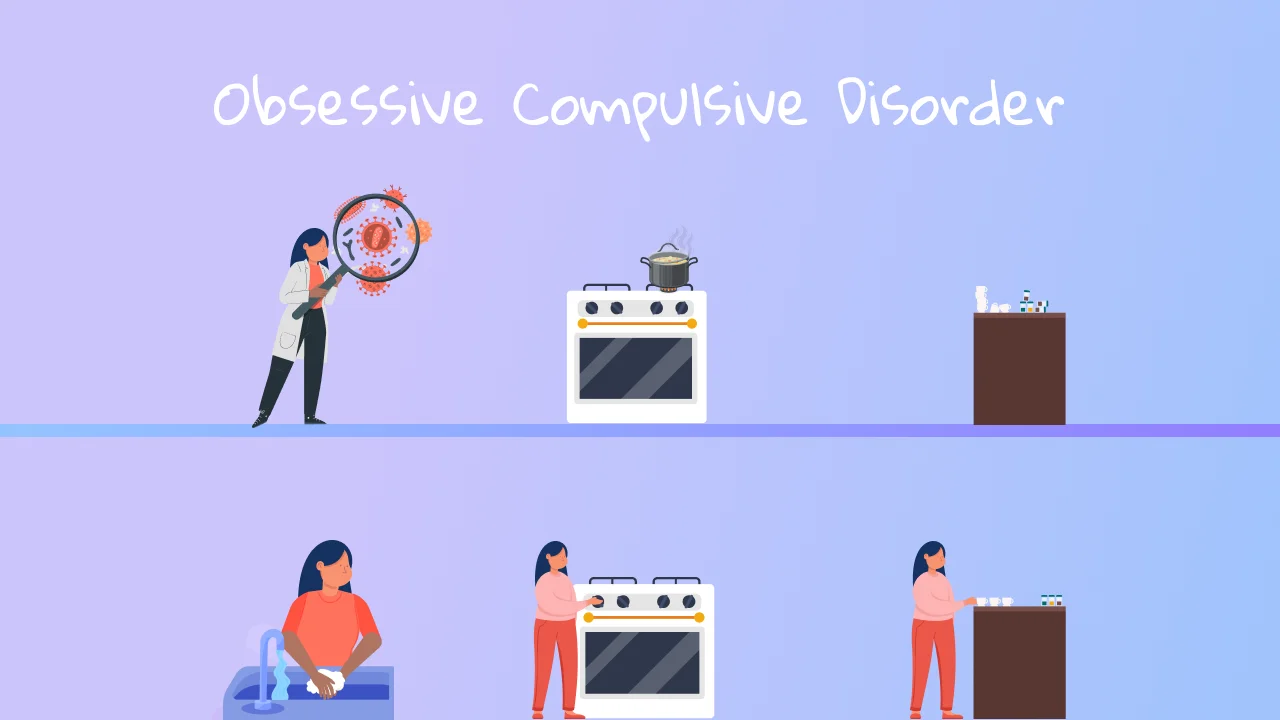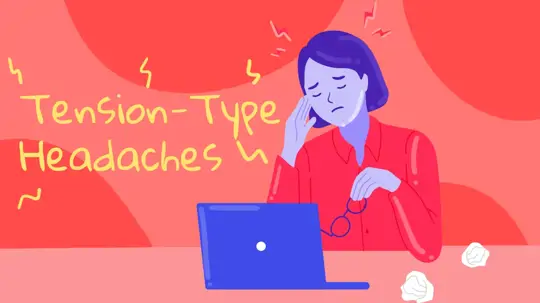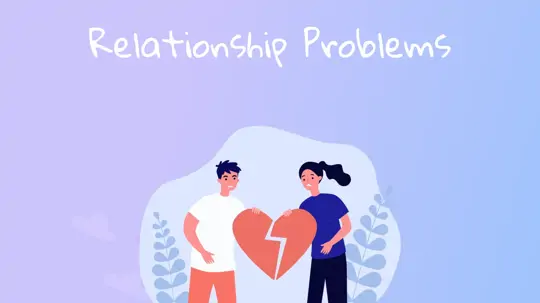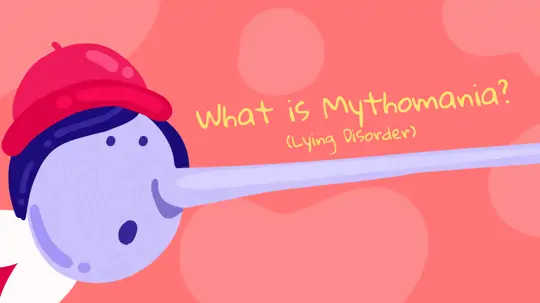
Start feeling better today!
Connect with your therapist today and take control of your life like our 850.000 happy clients.
Get StartedWhat is Obsessive-Compulsive Disorder?
Obsessive-Compulsive Disorder (OCD) is a chronic disorder characterized by uncontrollable and repetitive thoughts (obsessions) and repetitive and persistent compulsions.Obsessions
Obsessions are thoughts that are unwanted, persistent, disturbing, and uncontrollable. Obsessive thoughts occur spontaneously in Obsessive-Compulsive Disorder (OCD), and as people try to avoid these thoughts, obsessions occur more frequently and intensely.
Most obsession sufferers are aware that their thoughts are irrational, but they are unable to stop them. This is also known as obsession disorder.
Compulsions
Compulsions, on the other hand, are compulsive responses to anxiety caused by obsessions. These reactions manifest as an insatiable desire to engage in various behaviors.
People cannot help themselves from engaging in these various behaviors in order to alleviate the anxieties caused by their obsessions, and they create rituals consisting of these behaviors.
These behaviors are repetitive and aimed at reducing anxiety. Individuals waste a lot of time and lose functionality as a result of these rituals, which can take hours.
Because of the routines they must follow, patients with Obsessive-Compulsive Disorder are frequently unable to devote enough time to their daily work and responsibilities.
People initially believe they can deal with the situation because the disorder is not so severe that they lose functionality. Obsessions grow, develop, and sometimes change shape over time. When OCD worsens, it can be quite destructive, unpleasant, and frustrating.
What are the Symptoms of Obsessive-Compulsive Disorder?
Since both obsessions and compulsions characterize OCD, it is best to address their symptoms separately.
Most Common Obsession Symptoms
- The need for constant cleaning
- Excessive need for confirmation and reassurance
- The excessive fear of causing harm to loved ones
- Thoughts that doesn’t get out of one’s mind
- Doing most things multiple times (washing hands, turning off the stove, checking)
- Sexual images and thoughts that pop up in one’s mind at inconvenient times
- Creating specific routines

Most Common Compulsion Symptoms
- Consistently engaging in control behaviors
- Counting numbers continuously
- Reading the same prayer more than once
- Excessive hoarding behavior
- Keeping everything symmetrical and neat
- Not shaking hands
- Not touching doorknobs
Types of Obsession
Contamination Obsessions
One of the most common obsessions in obsessive-compulsive disorder is contamination. Contamination obsessions do not imply meticulousness, as some may believe.
People are afraid of contaminants like viruses, dirt, urine, feces, and bacteria. They don't go outside very often because it's too dirty for them. People develop cleaning habits in order to suppress these attachments. People with this type of compulsion are constantly cleaning and washing, but it never feels like enough.
Aggressive Obsessions
People who have aggressive obsessions are terrified of hurting themselves, their loved ones, or others. Because of their fears, people with this obsession avoid the presence of all kinds of objects that can harm them, and these objects are not found in open areas of their environment.
Aggressive obsessions prevent people from doing things like climbing high places, standing on a balcony, or using a knife in the kitchen.
Checking Obsessions
People who have checking obsessions are unsure whether a job has been completed, so they constantly control the work they do by developing a control compulsion to suppress this obsession.
People who have this obsession are constantly looking for new ways to control themselves, such as turning off the stove, unplugging the iron, or locking the door.
Sexual Obsessions
Sexual images embarrass or disturb people who have sexual obsessions. These are typically images that can be condemned and rejected by society.
Religious Obsessions
Obsessive thoughts about sin are common in religious obsessions. These people are unable to overcome thoughts of sin and thoughts that are considered sinful.
Symmetry Obsessions
OCD patients who have symmetry obsessions desire symmetry. If items are not in order, smooth, and symmetrical, these people experience severe anxiety and discomfort.
People with symmetry obsessions have organization compulsions. These individuals organize everything and ensure that everything is in order and symmetrical.
Age of Onset in Obsessive-Compulsive Disorder
Although it is initially a controllable and manageable disorder, people are slow to seek medical help. Obsessive-Compulsive Disorder is a disorder that can manifest itself as early as childhood.
Although this disorder is most common after the age of 20, it has been observed in 15% of patients over the age of 35. OCD has been estimated to affect between 2% and 3% of the population.
What Causes Obsessive-Compulsive Disorder?
Although the cause of Obsessive-Compulsive Disorder is still unknown, two factors have been identified as being important in the disorder's emergence. These are biological and environmental factors.
According to biological studies, obsessive-compulsive disorder patients have lower serotonin levels than healthy people. Environmental factors, stressful events, traumas, and major life changes can all trigger obsessive compulsive-disorder or worsen existing mild symptoms.
Treatment of Obsessive Compulsive Disorder
Scientific studies have shown that behavioral therapy methods are effective in addition to drug therapy in the treatment of OCD.

Cognitive Behavioral Therapy
False beliefs and automatic thoughts, which are at the root of obsessions, are identified and corrected in the cognitive component of Cognitive Behavioral Therapy (CBT). Behavioral therapy helps 80% of OCD patients.
The goal of this therapy is to accustom the OCD patient to the obsessions that they avoid and to prevent the compulsions that these obsessions cause.
In behavioral therapy, reaction prevention and delay are critical. That is, if the compulsions can be delayed and the obsessive-compulsive disorder patient can tolerate them, these skills will develop gradually and anxiety will decrease accordingly.
With this therapy, the person being treated is asked to list the level of discomfort of their obsessions and compulsions; goals are set, and behavior is changed by assigning the person more difficult tasks as these goals are met.
Before beginning this process, informing the client that it may be stressful is important, but if they bear it, the stress will be reduced. Some of the methods include:
- Preventing avoidance
- Going after obsessions via imagination
- Confronting obsessional thoughts rather than destroying them
- Leaving the flow of thoughts alone
- Writing down the patient's worrying thoughts
- Listening to or reading what they wrote multiple times
Drug Therapy
To increase the level of serotonin in the brain, SSRI type antidepressants, which are serotonin reuptake inhibitors, can be used in the treatment of OCD patients.Sources
- Bayar, R. & Yavuz, M. (2008). I. Ü Cerrahpaşa Faculty of Medicine Continuing Medical Education Activities, Symposium Series of Common Diseases in Turkey, No: 62, 185-192.
- Bayraktar, E. (1997). Obsessive-Compulsive Disorder, World of Psychiatry, 1, 25-32.
- Tan, O. (2004). Obsessions, Case Examples and Treatment Methods. Istanbul, Timaş Publications.
- Özten, E. & Karamustafalioglu, K.O. (2018). Obsessive-compulsive disorder. Turkiye Klinikleri J Fam Med-Special Topics, 9(3):157-163.





